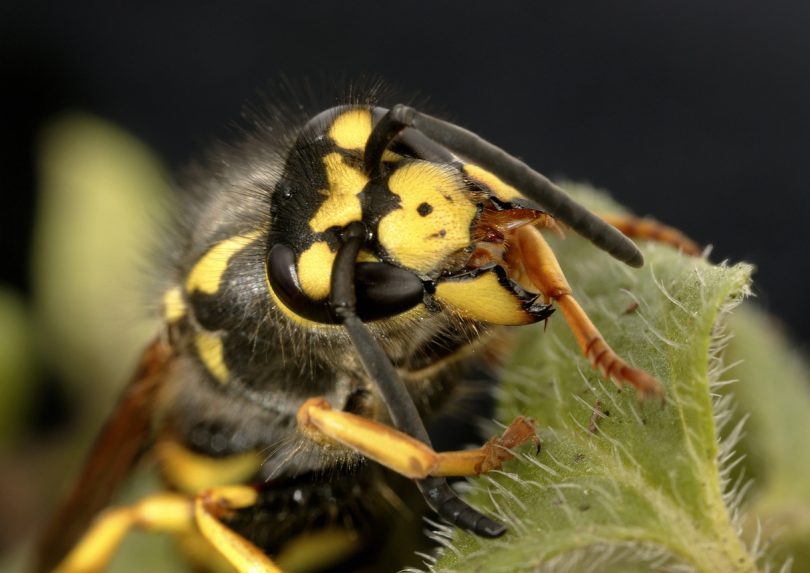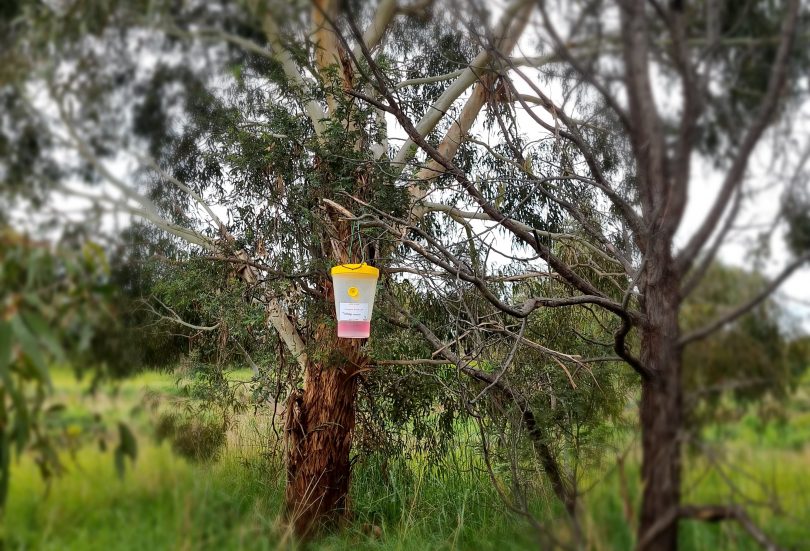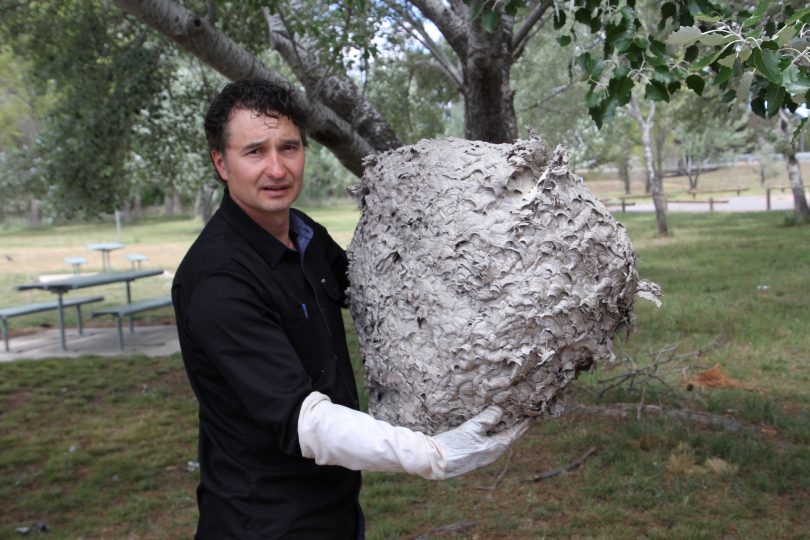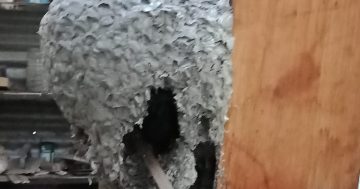
Canberrans are urged to report the location of European wasps via a new app. Photo: File.
The ACT Government is trialling a new European wasp (eWasp) trapping program to help lower the number of eWasp queens before they can establish new nests.
With the onset of warmer weather and more people heading outdoors, the new program will help minimise the impact of increased wasp numbers during summer.
Specialised eWasp queen bait stations have been placed in various locations across Canberra, including Molonglo River, Giralang Pond, Kingston Foreshore, Weston Park, Franklin Pond and Yarralumla Creek.
CoreEnviro Solutions senior pest and weed officer Jim Bariesheff said that with spring upon us, eWasp queens are emerging from hibernation in search of carbohydrates and nesting sites.
“One eWasp queen can produce thousands of workers and hundreds of next-generation queens in a colony over several months,” he said. “Their nests are often hidden with the most common nesting sites in wall cavities, holes in the ground, roof voids, retaining walls, and in conifer trees.

The new eWasp traps are hanging in several locations around Canberra. Photo: ACT City Services.
“The new product, Vespex from Sundew Solutions, is a chemical-free carbohydrate that lures eWasps to the station where queens become trapped in the product and removed from the environment.”
The European wasp (Vespula germanica) can be recognised by its bright yellow and black body and bright yellow legs. It is one of the most invasive insect pests globally, with major incursions in Australia, as well as in New Zealand, South Africa, Chile, Argentina, Canada and the US.
This particular species thrives in suburbia just as well as in wilderness areas, and has a profound impact on humans.
Wasp nests are established by single queens in spring, and by mid-autumn successful nests are busy rearing the new generation with a potential output of more than 7000 new queens per nest.
European wasps are attracted to sweet drinks, food, insects and pet food, and will also forage on road kill. Residents are advised to feed their pets indoors if European wasps are present as they can be very aggressive if disturbed.

Jim Bariesheff with a wasp nest found in the roof void of a house in Gordon. Photo: CoreEnviro Solutions.
Mr Bariesheff reminded the community that eWasp nests and bee swarms can be reported to the eWasp hotline.
“It is recommended that established nests are treated by a qualified pest controller to avoid any possible stinging incidents and to ensure the nest is properly controlled,” he said.
“Canberrans have done a fantastic job with reporting eWasp nests with 1112 reported to the hotline during the past year.
“Since September 2021, members of the community have also helped identify 11 cases of bee swarms to the eWasp hotline in areas on residential land, footpaths, nature strips and in parks.”
If stung by a wasp or bee, a cold pack may be used to relieve the pain. If there is evidence of a more severe reaction, or the stung individual is known to be allergic to wasp and bee stings, medical attention should be sought immediately.
For the reporting of eWasps or bees, and for more information, contact the eWasp Team on 02 6258 5551, download the eWasp app, or contact the eWasp hotline via its website.
Users of the eWasp app can also upload images of nests or hives to assist when reporting.













